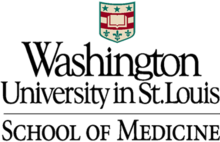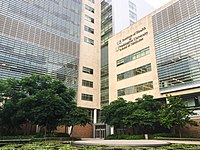
Carl Ferdinand Cori, ForMemRS was a Czech-American biochemist and pharmacologist. He, together with his wife Gerty Cori and Argentine physiologist Bernardo Houssay, received a Nobel Prize in 1947 for their discovery of how the glucose derivative glycogen is broken down and resynthesized in the body for use as a store and source of energy. In 2004, both Coris were designated a National Historic Chemical Landmark in recognition of their work that elucidated carbohydrate metabolism.

Gerty Theresa Cori was an Austrian-American biochemist who in 1947 was the third woman to win a Nobel Prize in science, and the first woman to be awarded the Nobel Prize in Physiology or Medicine, for her role in the "discovery of the course of the catalytic conversion of glycogen".
The University of Texas Southwestern Medical Center is a public academic health science center in Dallas, Texas. With approximately 23,000 employees, more than 3,000 full-time faculty, and nearly 4 million outpatient visits per year, UT Southwestern is the largest medical school in the University of Texas System and the State of Texas.

Daniel Nathans was an American microbiologist. He shared the 1978 Nobel Prize in Physiology or Medicine for the discovery of restriction enzymes and their application in restriction mapping.
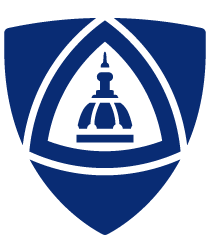
The Johns Hopkins University School of Medicine (JHUSOM) is the medical school of Johns Hopkins University, a private research university in Baltimore, Maryland. Founded in 1893, the School of Medicine shares a campus with Johns Hopkins Hospital and Johns Hopkins Children's Center, established in 1889.
The University of Maryland School of Medicine, located in Baltimore City, Maryland, U.S., is the medical school of the University of Maryland, Baltimore and is affiliated with the University of Maryland Medical Center and Medical System. Established in 1807 as the College of Medicine of Maryland, it is the first public and the fifth oldest medical school in the United States. UMB SOM's campus includes Davidge Hall, which was built in 1812, and is the oldest building in continuous use for medical education in the Northern Hemisphere.

Barnes-Jewish Hospital is the largest hospital in the U.S. state of Missouri. Located in the Central West End neighborhood of St. Louis, it is the adult teaching hospital for Washington University School of Medicine and a major component of Washington University Medical Center.

Boston University Chobanian & Avedisian School of Medicine (CAMED), formerly known as Boston University School of Medicine, is the medical school of Boston University, a private research university in Boston. It was founded in 1848. The medical school was the first institution in the world to formally educate female physicians. Originally known as the New England Female Medical College, it was subsequently renamed Boston University School of Medicine in 1873, then Chobanian & Avedisian School of Medicine in 2022. In 1864, it became the first medical school in the United States to award an M.D. degree to an African-American woman.
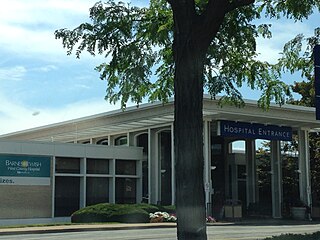
Barnes–Jewish West County Hospital is a 108-bed hospital within Greater St. Louis in the western St. Louis County, Missouri suburb of Creve Coeur. The hospital is located along the major arterial Olive Boulevard, one mile west of Interstate 270.
Case Western Reserve School of Medicine is the medical school of Case Western Reserve University, a private research university in Cleveland, Ohio. It is the largest biomedical research center in Ohio. CWRU SOM is primarily affiliated with University Hospitals Cleveland Medical Center, Cleveland Clinic, and the MetroHealth System.
Graham Andrew Colditz MD, DrPH is an Australian chronic disease epidemiologist. He is the inaugural Niess-Gain Professor at Washington University School of Medicine, where he is associate director for Prevention and Control at the Alvin J. Siteman Cancer Center. He directs the Master of Population Health Science at Washington University School of Medicine. During medical training he was excited by the potential for prevention of chronic diseases. With encouragement from mentors he pursued training in the US as it was routine for academics in Australia to obtain overseas training at that time. He is internationally recognized for leadership in cancer prevention, and is often interviewed by media for input on this topic. With members of Cancer Prevention and Control at Siteman, he blogs on issues relating to cancer prevention and screening. According to Google Scholar statistics, Colditz has a h-index of more than 300.

The George Washington University School of Medicine and Health Sciences is the professional medical school of the George Washington University, in Washington, D.C. SMHS is one of the most selective medical schools in the United States based on the number of applicants.
BJC HealthCare is a non-profit health care organization based in St. Louis, Missouri. BJC includes two nationally recognized academic hospitals – Barnes–Jewish Hospital and St. Louis Children's Hospital, which are both affiliated with the Washington University School of Medicine.

McDonnell Genome Institute at Washington University in St. Louis, Missouri, is one of three NIH funded large-scale sequencing centers in the United States. Affiliated with Washington University School of Medicine and the Alvin J. Siteman Cancer Center, the McDonnell Genome Institute is creating, testing and implementing new approaches to the study of genomics with the goal of understanding human health and disease, as well as evolution and the biology of other organisms.

Timothy J. Ley is an American hematologist and cancer biologist. He is the Lewis T. and Rosalind B. Apple Professor of Oncology in the department of medicine, and is chief of the section of stem cell biology in the division of oncology at Washington University in St. Louis. He is a member of the Alvin J. Siteman Cancer Center.
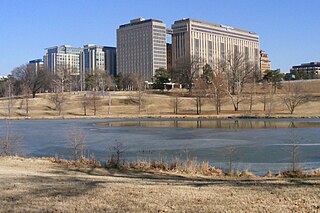
The Washington University Medical Center (WUMC), located in St. Louis, Missouri, is a large scale health-care focused commercial development located in St. Louis' Central West End neighborhood. The Washington University Medical Center Redevelopment Corporation focuses on developing public-private partnerships that promote infrastructure and housing development in the WUMC area. As of 2017, the executive director of WUMCRC is Brian Phillips. Although many of the institutions are affiliated with Washington University in St. Louis, most of the institutions of WUMC are independent of the university. Notably, the medical center is anchored by Barnes-Jewish Hospital and also houses the Washington University Medical School.
The Alvin J. Siteman Cancer Center at Barnes-Jewish Hospital and Washington University School of Medicine is a cancer treatment, research and education institution with six locations in the St. Louis area. Siteman is the only cancer center in Missouri and within 240 miles of St. Louis to be designated a Comprehensive Cancer Center by the National Cancer Institute (NCI). Siteman is also the only area member of the National Comprehensive Cancer Network, a nonprofit alliance of 32 cancer centers dedicated to improving the quality and effectiveness of cancer care.
Helen Margaret Piwnica-Worms is an American cell-cycle researcher. Since 2013, she has served as vice provost of science at the MD Anderson Cancer Center and professor in MD Anderson's Department of Cancer Biology.
